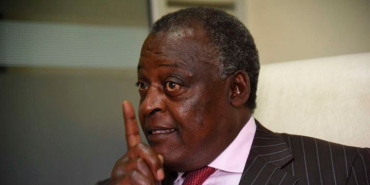Sh13 Million Needed to Repatriate Kenyan Climber Kirui from Mt Everest

In the wake of Joshua Cheruiyot Kirui's tragic demise on the unforgiving slopes of Mount Everest, his loved ones confront the challenge of repatriating his body from the perilous heights of the world's tallest peak.
This undertaking, fraught with danger and immense expense, could cost as much as Sh13 million ($100,000). Kirui, a 40-year-old Kenyan, embarked on an audacious quest to etch his name in the annals of history as the first African to conquer Everest without the aid of supplementary oxygen. Accompanied by his Nepali guide, Nawang Sherpa, aged 44, the duo forged ahead with unwavering determination, only to have their dreams shattered in the treacherous slopes of Mount Everest.
Kirui's lifeless body was discovered just meters from the summit. The fate of Nawang Sherpa remains shrouded in mystery, lost in the mountain's dangerous "death zone." Reports indicate that Kirui exhibited unusual behaviour, refusing to use bottled oxygen and declining to descend, ultimately succumbing to the harsh conditions that have claimed countless lives on Everest's slopes. Kirui's close friend and hiking partner Kipkemoi Limo is among those who have expressed shock and disbelief at his untimely passing.
Kirui's quest for glory was fueled by determination and a substantial financial investment of over Sh7 million (£47,000). He had mentioned that the experience of scaling formidable peaks like Nepal's Mount Manaslu had prepared him for the challenges ahead. Retrieving a body from Mount Everest is a daunting task, fraught with danger and exorbitant costs that can exceed $100,000 due to the high expenses and risks involved. This reality has led to the tragic fact that only a small number of bodies have been successfully brought down from Everest and other peaks above 7000 and 8000 meters. Climbing Everest, the world's highest peak, is an incredibly difficult and risky undertaking, even for the most experienced climbers.
Approximately 66% of the climbers and Sherpas who have perished on Everest are believed to remain entombed within the snow and ice, their final resting places concealed within crevasses, buried beneath avalanches, or exposed on the unforgiving slopes. Over time, the elements have taken their toll, disfiguring and fading their limbs under the relentless sun.
Nepal Mountaineering Association President Ang Tshering Sherpa sheds light on the immense challenges involved in retrieving a body from Everest's icy heights. Even retrieving a simple candy wrapper is a significant undertaking, as it is usually frozen and requires digging. A frozen body can weigh up to 150 kilograms, making it extremely difficult to move from the mountain. Teams typically use sledges or fabric to remove a body which is then controlled down to the next camp using ropes. Due to the lack of wood or stove fuel, cremation on the mountain is not possible, and bodies must be brought low enough for helicopters to pick them up.














Comments
Did he really have to? Well…
Permalink
Did he really have to? Well,he got his fifteen minutes of fame but was it really worth it?
A millionaire is to be “made…
Permalink
A millionaire is to be “made’ in a week’s time.I wish him/her good luck.
If you are involved in…
Permalink
If you are involved in extremely dangerous stunts, you should always have insurance for that particular purpose!!!
Add new comment